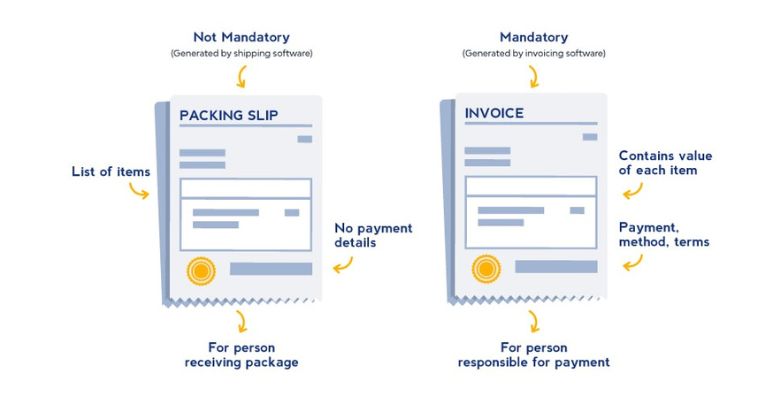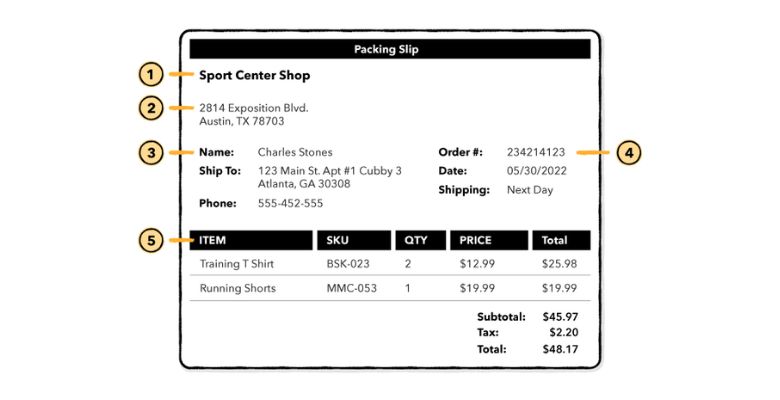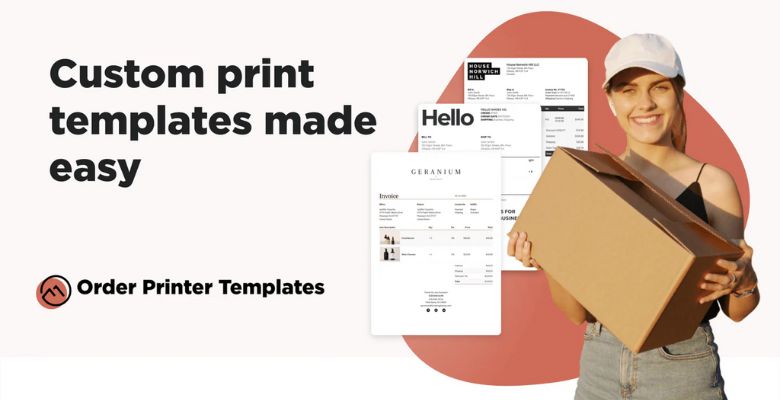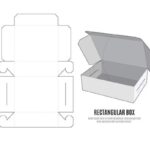Have you ever wondered what goes into the shipping box besides the product itself? That’s where packing slips come in. A packing slip is a document that accompanies a shipment of goods, listing the items included in the package. It’s like a checklist for both the sender and the recipient, ensuring that all items are correctly packed and received.
Packing slips contain essential details like the shipper’s information, the buyer’s address, and product quantities. But why are they so important, and how do they differ from invoices? Let’s dive deeper into the world of packing slips.
Why Is a Packing Slip Important?
You might ask: why is a piece of paper so vital? Here’s the deal:
- Prevents Shipping Errors: Packing slips ensure the correct products are shipped, reducing returns and complaints.
- Improves Inventory Management: By tracking what’s shipped, businesses can maintain accurate stock levels.
- Facilitates Faster Audits: During audits or disputes, packing slips serve as proof of shipment.
- Enhances Customer Experience: Customers can cross-check their orders, building trust in your brand.
Pro tip: Always include a packing slip, especially for larger or international shipments where the likelihood of error increases.
Packing Slip vs. Invoice: What’s the Difference?

A common question: are packing slips and invoices the same thing? While they may seem similar, these documents serve different purposes.
|
Packing Slip |
Invoice |
| Lists items in the shipment | Lists items and their payment details |
| Sent inside the package | Sent via email or with the package |
| Does not contain payment info | Contains payment, tax, and total amount |
Key takeaway:
Packing slips focus on what’s shipped, while invoices focus on what’s owed. Both are necessary, but they shouldn’t be confused.
How to Create a Packing Slip: A Step-by-Step Guide
Creating a packing slip might sound daunting, but it’s easier than you think! Here’s a simple guide:
Step 1: Gather Order Information
Start by compiling all relevant data, such as order number, customer name, and shipping address.
Step 2: List Products
Detail each item in the shipment, including quantities, descriptions, and SKU (Stock Keeping Unit) numbers.
Step 3: Include Your Business Details
Don’t forget to add your company’s name, address, and contact details. This helps with any follow-up inquiries.
Step 4: Format for Clarity
Make sure the packing slip is easy to read. Use tables to organize product information, with headers for each section (e.g., Item, Quantity, SKU).
Step 5: Print and Attach
Print the slip and place it inside the package, ensuring it’s accessible upon opening.
What Should Be Included in a Packing Slip?

Packing slips should be simple, but comprehensive. Here’s what you should include:
- Order Number: For quick reference.
- Customer and Shipping Information: Ensures the package goes to the right place.
- Itemized List of Products: Product name, quantity, and SKU.
- Special Instructions: Any notes for delivery or handling, if applicable.
- Your Business Details: Keep your contact information on the slip for any questions.
Common Mistakes to Avoid with Packing Slips
Even small mistakes can cause big headaches. Here’s what to watch out for:
- Incorrect Item Listings: Make sure the slip reflects exactly what’s in the package.
- Missing Contact Information: Without this, the customer has no way to follow up.
- Not Including SKU Numbers: SKU numbers help both you and the customer track inventory.
By avoiding these common pitfalls, you’ll ensure smooth transactions and happy customers.
Examples of Packing Slips from Different Industries
Packing slips can vary depending on the industry. Let’s look at a few examples:
- E-commerce: Simple slips that list product details and quantities.
- Manufacturing: More detailed, with part numbers, batch numbers, and even production dates.
- Luxury Goods: Packing slips that include personalized notes or branded elements, elevating the customer experience.
No matter the industry, the packing slip’s purpose remains the same: ensuring the right products make it to the right destination.
How Packing Slips Improve Order Accuracy and Efficiency
Packing slips is an easy way to enhance order accuracy and streamline processes. Here’s how:
- Reduced Errors: Packing slips double-check employees’ packing of orders, catching mistakes before they leave the warehouse.
- Improved Fulfillment Speed: Workers can quickly match products with slips, speeding up the fulfillment process.
- Enhanced Customer Satisfaction: Clear and correct packing slips mean fewer returns and complaints.
In short, they save time, reduce costs, and improve the overall customer experience.
Packing Slip Templates: Free Resources

Want to make creating packing slips even easier? Here are some free templates you can use for your business:
- Basic Packing Slip Template: For small businesses looking for simplicity.
- Detailed Packing Slip Template: Includes space for SKUs, product descriptions, and quantities.
- Customizable Packing Slip Template: Tailor this one to fit your business’s branding and style.
These templates can be downloaded, customized, and printed as needed, giving you a professional look with minimal effort.
Read Also: Mastering Packaging Design Software: 12 Best Tools
Digital Packing Slips: The Future of Shipping Documentation
With the rise of e-commerce, the future of packing slips is going digital. Here’s why:
- Paperless Options: Reduces waste and saves on printing costs.
- Easy Access: Customers can access digital slips directly from their email or account dashboard.
- Automation: Integrating digital packing slips with inventory management systems helps automate the shipping process.
Ready to switch?
Digital packing slips are the next step in efficient, eco-friendly shipping. Consider integrating them into your fulfillment process for a smoother, more modern customer experience.
Read Also: Comprehensive Packaging Strategies for Small Businesses
Conclusion
Packing slips are more than just a formality—they’re crucial for ensuring accurate, efficient shipping and enhancing the customer experience. By understanding their importance, avoiding common mistakes, and using templates, you can streamline your packing process with 99 designs packaging that can helps to boost customer satisfaction.
Ready to start? Download our free templates and see how packing slips can improve your business today!





